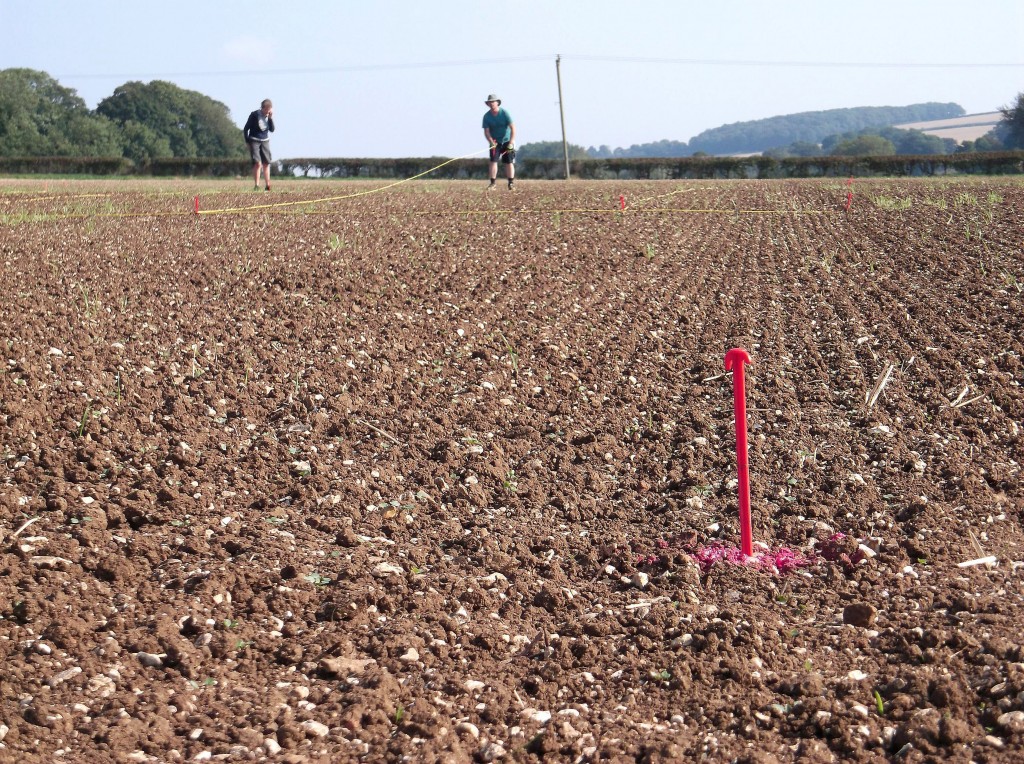Feed URL: https://blogs.kent.ac.uk/digthewolds/2014/09/10/prelim-geophys/feed/?withoutcomments=1
Geophysical surveying has taken the main stage in the fieldwork so far. Several high-tech machines have aided us in this; the Total station, which allows us to create a digital map of the site with incredible precision; the magnetometer, collecting data about the difference in magnetic fields of the materials below the surface (which can indicate disturbance in the soil from human activity such as a filled pit, wall foundations, or a bonfire site); and the resistivity meter, which pinpoints specific features of high density or materials of high electrical resistance.
We have permission to investigate with test pits in parts of the site and it is vital that we select where we dig these pits very carefully as this landscape is heavily used for agriculture, and there is a window in which we can use the site without interfering with the cultivation. The recent ploughing has, in fact, greatly aided our fieldwalking – looking along the surface of the soil for any artefacts that have made their way to the top. As the topsoil has been overturned by the plough, small fragments are visible all across the site, as well as in the lower reaches of the field.
Systematic and scientific – many intriguing features are being shown by magnetometer and resistivity data through specialist imaging software. This is particularly useful in a landscape comprised of big fields with few surface indication of past activities, such as longbarrows. From the network of line-like features interpreted as wall foundations, our team imagine we may be seeing a Roman villa – but with the massive scale on which we are finding CBM (ceramic building materials) across the site, why not a more sophisticated villa? It could perhaps be a farming complex, such as a more sophisticated villa, not unlike modern farm estates!
Our archaeological technician Lloyd has been in charge of the geophysical surveying and instructing students in this field of specialist technology, while Steve leads the rest of the team in other surface surveys in other parts of the field. Yet even without intentional fieldwalking, all members working on the site this past week have been making finds from start to finish. So far, our finds have ranged from Neolithic worked flint to Victorian printed ceramic and glassware, including a clay smoking-pipe and box nails – with a great wealth in-between of Roman household ceramics, both building materials and domestic pottery. The presence of roof tiles in particular and pieces of box flue used in Roman central heating heavily suggest not just Roman settlement in the area, but well-designed architecture.
In-depth geophysical surveying comes to an end shortly with Lloyd’s departure (and subsequently, some of the equipment’s!), and may continue on a small-scale basis with the arrival of more Kent students – and with the results of the latest survey continuing to give us very strong indications of what lies below the ploughsoil, we hope to find ever more potential in this site.


